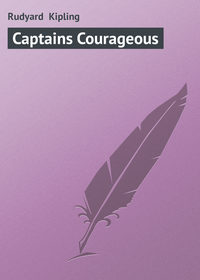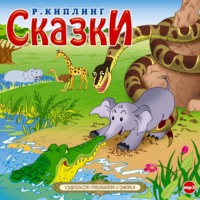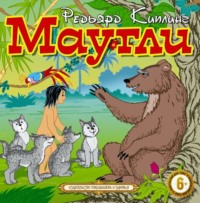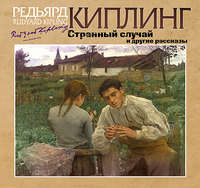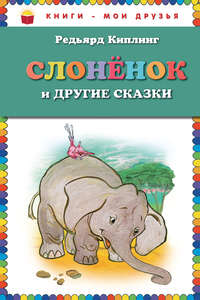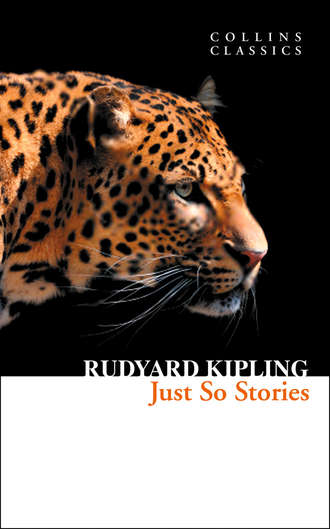
Полная версия
Just So Stories

JUST SO STORIES
Rudyard Kipling

CONTENTS
Title Page
History of Collins
Life & Times
How the Whale Got His Throat
How the Camel Got His Hump
How the Rhinoceros Got His Skin
How the Leopard Got His Spots
The Elephant’s Child
The Sing-Song of Old Man Kangaroo
The Beginning of the Armadilloes
How the First Letter was Written
How the Alphabet was Made
The Crab that Played with the Sea
The Cat that Walked by Himself
The Butterfly that Stamped
Footnotes
Classic Literature: Words and Phrases adapted from the Collins English Dictionary
Copyright
About the Publisher
History of Collins
In 1819, millworker William Collins from Glasgow, Scotland, set up a company for printing and publishing pamphlets, sermons, hymn books and prayer books. That company was Collins and was to mark the birth of HarperCollins Publishers as we know it today. The long tradition of Collins dictionary publishing can be traced back to the first dictionary William published in 1824, Greek and English Lexicon. Indeed, from 1840 onwards, he began to produce illustrated dictionaries and even obtained a licence to print and publish the Bible.
Soon after, William published the first Collins novel, Ready Reckoner, however it was the time of the Long Depression, where harvests were poor, prices were high, potato crops had failed and violence was erupting in Europe. As a result, many factories across the country were forced to close down and William chose to retire in 1846, partly due to the hardships he was facing.
Aged 30, William’s son, William II took over the business. A keen humanitarian with a warm heart and a generous spirit, William II was truly ‘Victorian’ in his outlook. He introduced new, up-to-date steam presses and published affordable editions of Shakespeare’s works and Pilgrim’s Progress, making them available to the masses for the first time. A new demand for educational books meant that success came with the publication of travel books, scientific books, encyclopaedias and dictionaries. This demand to be educated led to the later publication of atlases and Collins also held the monopoly on scripture writing at the time.
In the 1860s Collins began to expand and diversify and the idea of ‘books for the millions’ was developed. Affordable editions of classical literature were published and in 1903 Collins introduced 10 titles in their Collins Handy Illustrated Pocket Novels. These proved so popular that a few years later this had increased to an output of 50 volumes, selling nearly half a million in their year of publication. In the same year, The Everyman’s Library was also instituted, with the idea of publishing an affordable library of the most important classical works, biographies, religious and philosophical treatments, plays, poems, travel and adventure. This series eclipsed all competition at the time and the introduction of paperback books in the 1950s helped to open that market and marked a high point in the industry.
HarperCollins is and has always been a champion of the classics and the current Collins Classics series follows in this tradition – publishing classical literature that is affordable and available to all. Beautifully packaged, highly collectible and intended to be reread and enjoyed at every opportunity.
Life & Times
About the Author
Rudyard Kipling was born in Mumbai, formerly known as Bombai, when it was part of British India during the days of the British Empire. He was born in 1865, the year that Lewis Carroll’s Alice’s Adventures in Wonderland was published, undoubtedly a genre of writing that later influenced his work. At the age of six, Kipling was sent to England to continue his education. He was deeply unhappy during this part of his childhood and it seems that this was when he began inventing companions in the form of anthropomorphic animals.
Having finished his schooling, Kipling returned to British India to become assistant editor of a newspaper in Lahore, which is now in Pakistan. He immediately felt at home and quickly forgot about his time in England. In 1887 Kipling moved from Lahore to Allahabad to work on another newspaper. He had already published a great many short stories by this time and two years later left India on a world tour. This included a trip across the United States and then a voyage by boat to England. Having ensconced himself in London he published his first novel The Light that Failed (1890), but evidently had a crisis of self-confidence and suffered a nervous breakdown. His personal life was set to change in 1892 however, when he married Carrie Balestier, the sister of Wolcot Ballestier, with whom he had collaborated on another book.
Their honeymoon took them to Vermont in the United States, where they decided to settle because Carrie had fallen pregnant. The Kiplings remained in Vermont for four years. During this period Rudyard appeared to be content and wrote his best known work, The Jungle Book. Unfortunately a political crisis between Britain and the United States led to anti-British sentiment and Kipling felt it most from the press. A family feud between the Kiplings and Carrie’s brother proved the final straw and sealed Rudyard’s decision to leave America.
The Kipling family moved to the south coast of Devon, England and then East Sussex from 1902. By now Kipling was a famous man and enjoyed his growing celebrity in the first decade of the 20th century. In 1907 he won the Nobel Prize for Literature, such was his fame and reputation worldwide. World War I was, however, to have a tragic outcome for the Kiplings. In 1915 their son John was killed. He had gone to war in the blind spirit of enthusiasm that characterized the age and fallen at the Battle of Loos. Kipling felt eternal guilt at his son’s death because he had used his influence to get John accepted into the army following his initial rejection for having poor eyesight.
Following Kipling’s own death in 1936 his work became rather unfashionable, partly because of changing tastes and partly because the British Empire began to disintegrate following World War II. British India itself gained its independence from colonial rule in 1947 and was partitioned into Pakistan and India. In the latter half of the 20th century Kipling’s work became part of the cannon of English literary history, especially his two Jungle Book collections, and he is now considered one of the all time greats.
In India, his legacy is a matter of contention because his writing is centred on colonial times and many of his characters are intrinsically racist. It isn’t that Kipling himself was prejudiced particularly, but that the culture among the British colonists was superior in its view of the natives. Kipling therefore wrote his characters as he witnessed real people around him. It would be true to say that many Europeans had an elitist attitude to non-Caucasian races at that time, so it would be inappropriate to judge Kipling by modern standards of political correctness.
The Jungle Book
When The Jungle Book is mentioned, most people think of the Disney animated film. This actually has very little to do with the stories of Rudyard Kipling, as Walt Disney only took the basic idea of anthropomorphic jungle animals and transformed them into lovable children’s characters. Kipling’s characters and stories are far darker and fantastical. In fact, Kipling deliberately wrote his stories as fables, to provide moral and ethical guidance to his readers, both young and old. The first collection of stories was published in 1894, quickly followed by a second in 1895, appropriately titled The Second Jungle Book.
Mowgli, the central human character, is a young boy who has been raised by a she wolf. He is thus in the unique position of being able to communicate with the various animals of the jungle. There had been various tales of children having been raised by wild animals and this is where Kipling drew his inspiration from. Some of those tales had an element of truth to them, but the majority were myths. Nevertheless, they made a solid foundation for Kipling’s stories, as Mowgli was the ideal transitional character. In essence he was half human, half animal in his psychology. He also possessed the naivety of a child and was therefore open-minded and fearless.
Mowgli appears in three of the stories in The Jungle Book. There are seven all told, with a song chapter following each one. As well as Mowgli and his animal companions, there are stories about a white seal named Kotick, a mongoose named Rikki-Tikki-Tavi, another boy named Toomai, and a group of domesticated Indian animals living in an army barracks. Kipling anthropomorphizes throughout The Jungle Book, so that he is able to tell his stories from the animals’ point of view. In doing so, he manages to comment on human behaviour in an objective, as opposed to subjective way. The animals in his books observe society, free from the constraints of culture and etiquette, but they also have their own interests and concerns. In English literature the practice of writing human-like animals was established with Lewis Carroll’s Alice’s Adventures in Wonderland in 1865. The earliest use of this device however, dates back to the ancient Greeks, with Aesop’s fables. By using animals to teach people lessons in wisdom it somehow made it more acceptable and easier to digest, especially for younger readers.
In The Second Jungle Book we find Mowgli returned in the first five stories out of a total of eight. The second story, The King’s Ankus, illustrates very well Kipling’s use of Mowgli’s naive outlook on life. In the story Mowgli finds a very valuable, jewel encrusted ankus (an elephant stick), but to him it is just a curious object, which he tosses away unaware that to other humans it is priceless and even worth killing for. Kipling uses this as a metaphor for pointing out the ridiculousness of the want of wealth in society, when all that matters is that we are healthy and happy.
The remaining three stories are about an Indian politician, three scavenging animals having a quarrel and a young Inuit hunter. This final story and the story of the white seal Kotick, in the first book, are anomalies as they are not set in the jungle at all, but in the northern latitudes at or near the Arctic Circle. Although Kipling had spent some years living in India, he actually wrote both books whilst residing in the American state of Vermont, which borders with Canada. This is evidently where he got his inspiration for these two misplaced stories.
It also explains the distanced and romanticized view of India in his books. There is something about his approach to the stories that tells the reader that Kipling is evoking memories or confabulations of an India that perhaps never quite existed. This, however, does nothing to erode the charm of his writing and only serves to condense his images so that the reader is taken in fully by his fictional world.
How the Whale Got His Throat

In the sea, once upon a time, O my Best Beloved, there was a Whale, and he ate fishes. He ate the starfish and the garfish, and the crab and the dab, and the plaice and the dace, and the skate and his mate, and the mackereel and the pickereel, and the really truly twirly-whirly eel. All the fishes he could find in all the sea he ate with his mouth – so! Till at last there was only one small fish left in all the sea, and he was a small ’Stute Fish, and he swam a little behind the Whale’s right ear, so as to be out of harm’s way. Then the Whale stood up on his tail and said, ‘I’m hungry.’ And the small ’Stute Fish said in a small ’stute voice, ‘Noble and generous Cetacean, have you ever tasted Man?’
‘No,’ said the Whale. ‘What is it like?’
‘Nice,’ said the small ’Stute Fish. ‘Nice but nubbly.’
‘Then fetch me some,’ said the Whale, and he made the sea froth up with his tail.
‘One at a time is enough,’ said the ’Stute Fish. ‘If you swim to latitude Fifty North, longitude Forty West (that is Magic), you will find, sitting on a raft, in the middle of the sea, with nothing on but a pair of blue canvas breeches, a pair of suspenders (you must not forget the suspenders, Best Beloved), and a jack-knife, one shipwrecked Mariner, who, it is only fair to tell you, is a man of infinite-resource-and-sagacity.’
So the Whale swam and swam to latitude Fifty North, longitude Forty West, as fast as he could swim, and on a raft, in the middle of the sea, with nothing to wear except a pair of blue canvas breeches, a pair of suspenders (you must particularly remember the suspenders, Best Beloved), and a jack-knife, he found one single, solitary shipwrecked Mariner, trailing his toes in the water. (He had his Mummy’s leave to paddle, or else he would never have done it, because he was a man of infinite-resource-and-sagacity.)
Then the Whale opened his mouth back and back and back till it nearly touched his tail, and he swallowed the shipwrecked Mariner, and the raft he was sitting on, and his blue canvas breeches, and the suspenders (which you must not forget), and the jack-knife – He swallowed them all down into his warm, dark, inside cupboards, and then he smacked his lips – so, and turned round three times on his tail.
But as soon as the Mariner, who was a man of infinite-resource-and-sagacity, found himself truly inside the Whale’s warm, dark, inside cupboards, he stumped and he jumped and he thumped and he bumped, and he pranced and he danced, and he banged and he clanged, and he hit and he bit, and he leaped and he creeped, and he prowled and he howled, and he hopped and he dropped, and he cried and he sighed, and he crawled and he bawled, and he stepped and he lepped, and he danced hornpipes where he shouldn’t, and the Whale felt most unhappy indeed. (Have you forgotten the suspenders?)
So he said to the ’Stute Fish, ‘This man is very nubbly, and besides he is making me hiccough. What shall I do?’
‘Tell him to come out,’ said the ’Stute Fish.
This is the picture of the Whale swallowing the Mariner with his infinite-resource-and-sagacity, and the raft and the jack-knife and his suspenders, which you must not forget. The buttony-things are the Mariner’s suspenders, and you can see the knife close by them. He is sitting on the raft, but it has tilted up sideways, so you don’t see much of it. The whity thing by the Mariner’s left hand is a piece of wood that he was trying to row the raft with when the Whale came along. The piece of wood is called the jaws-of-a-gaff. The Mariner left it outside when he went in. The Whale’s name was Smiler, and the Mariner was called Mr. Henry Albert Bivvens, A.B. The little ’Stute Fish is hiding under the Whale’s tummy, or else I would have drawn him. The reason that the sea looks so ooshy-skooshy is because the Whale is sucking it all into his mouth so as to suck in Mr. Henry Albert Bivvens and the raft and the jack-knife and the suspenders. You must never forget the suspenders.

So the Whale called down his own throat to the shipwrecked Mariner, ‘Come out and behave yourself. I’ve got the hiccoughs.’
‘Nay, nay!’ said the Mariner. ‘Not so, but far otherwise. Take me to my natal-shore and the white-cliffs-of-Albion, and I’ll think about it.’ And he began to dance more than ever.
‘You had better take him home,’ said the ’Stute Fish to the Whale. ‘I ought to have warned you that he is a man of infinite-resource-and-sagacity.’
So the Whale swam and swam and swam, with both flippers and his tail, as hard as he could for the hiccoughs; and at last he saw the Mariner’s natal-shore and the white-cliffs-of-Albion, and he rushed half-way up the beach, and opened his mouth wide and wide and wide, and said, ‘Change here for Winchester, Ashuelot, Nashua, Keene, and stations on the Fitchburg Road’; and just as he said ‘Fitch’ the Mariner walked out of his mouth.
But while the Whale had been swimming, the Mariner, who was indeed a person of infinite-resource-and-sagacity, had taken his jack-knife and cut up the raft into a little square grating all running criss-cross, and he had tied it firm with his suspenders (now you know why you were not to forget the suspenders!), and he dragged that grating good and tight into the Whale’s throat, and there it stuck! Then he recited the following Sloka, which, as you have not heard it, I will now proceed to relate—
By means of a grating
I have stopped your ating.
For the Mariner he was also an Hi-ber-ni-an. And he stepped out on the shingle, and went home to his Mother, who had given him leave to trail his toes in the water; and he married and lived happily ever afterward. So did the Whale. But from that day on, the grating in his throat, which he could neither cough up nor swallow down, prevented him eating anything except very, very small fish; and that is the reason why whales nowadays never eat men or boys or little girls.
The small ’Stute fish went and hid himself in the mud under the Door-sills of the Equator. He was afraid that the Whale might be angry with him.
The Sailor took the jack-knife home. He was wearing the blue canvas breeches when he walked out on the shingle. The suspenders were left behind, you see, to tie the grating with; and that is the end of that tale.
WHEN the cabin port-holes are dark and green
Because of the seas outside;
When the ship goes wop (with a wiggle between)
And the steward falls into the soup-tureen,
And the trunks begin to slide;
When Nursey lies on the floor in a heap,
And Mummy tells you to let her sleep,
And you aren’t waked or washed or dressed,
Why, then you will know (if you haven’t guessed)
You’re ‘Fifty North and Forty West!’
Here is the Whale looking for the little ’Stute Fish, who is hiding under the Door-sills of the Equator. The little ’Stute Fish’s name was Pingle. He is hiding among the roots of the big seaweed that grows in front of the Doors of the Equator. I have drawn the Doors of the Equator. They are shut. They are always kept shut, because a door ought always to be kept shut. The ropy-thing right across is the Equator itself; and the things that look like rocks are the two giants Moar and Koar, that keep the Equator in order. They drew the shadow-pictures on the Doors of the Equator, and they carved all those twisty fishes under the Doors. The beaky-fish are called beaked Dolphins, and the other fish with the queer heads are called Hammer-headed Sharks. The Whale never found the little ’Stute Fish till he got over his temper, and then they became good friends again.

How the Camel Got His Hump

Now this is the next tale, and it tells how the Camel got his big hump.
In the beginning of years, when the world was so new-and-all, and the Animals were just beginning to work for Man, there was a Camel, and he lived in the middle of a Howling Desert because he did not want to work; and besides, he was a Howler himself. So he ate sticks and thorns and tamarisks and milkweed and prickles, most ’scruciating idle; and when anybody spoke to him he said ‘Humph!’ Just ‘Humph!’ and no more.
Presently the Horse came to him on Monday morning, with a saddle on his back and a bit in his mouth, and said, ‘Camel, O Camel, come out and trot like the rest of us.’
‘Humph!’ said the Camel; and the Horse went away and told the Man.
Presently the Dog came to him, with a stick in his mouth, and said, ‘Camel, O Camel, come and fetch and carry like the rest of us.’
‘Humph!’ said the Camel; and the Dog went away and told the Man.
Presently the Ox came to him, with the yoke on his neck, and said, ‘Camel, O Camel, come and plough like the rest of us.’
‘Humph!’ said the Camel; and the Ox went away and told the Man.
At the end of the day the Man called the Horse and the Dog and the Ox together, and said, ‘Three, O Three, I’m very sorry for you (with the world so new-and-all); but that Humph-thing in the Desert can’t work, or he would have been here by now, so I am going to leave him alone, and you must work double-time to make up for it.’
That made the Three very angry (with the world so new-and-all), and they held a palaver, and an indaba, and a punchayet, and a pow-wow on the edge of the Desert; and the Camel came chewing milkweed most ’scruciating idle, and laughed at them. Then he said ‘Humph!’ and went away again.
Presently there came along the Djinn in charge of All Deserts, rolling in a cloud of dust (Djinns always travel that way because it is Magic), and he stopped to palaver and pow-wow with the Three.
‘Djinn of All Deserts,’ said the Horse, ‘is it right for any one to be idle, with the world so new-and-all?’
‘Certainly not,’ said the Djinn.
‘Well,’ said the Horse, ‘there’s a thing in the middle of your Howling Desert (and he’s a Howler himself) with a long neck and long legs, and he hasn’t done a stroke of work since Monday morning. He won’t trot.’
‘Whew!’ said the Djinn, whistling, ‘that’s my Camel, for all the gold in Arabia! What does he say about it?’
‘He says “Humph!”’ said the Dog; ‘and he won’t fetch and carry.’
This is the picture of the Djinn making the beginnings of the Magic that brought the Humph to the Camel. First he drew a line in the air with his finger, and it became solid; and then he made a cloud, and then he made an egg – you can see them at the bottom of the picture – and then there was a magic pumpkin that turned into a big white flame. Then the Djinn took his magic fan and fanned that flame till the flame turned into a Magic by itself. It was a good Magic and a very kind Magic really, though it had to give the Camel a Humph because the Camel was lazy. The Djinn in charge of All Deserts was one of the nicest of the Djinns, so he would never do anything really unkind.

Here is the picture of the Djinn in charge of All Deserts guiding the Magic with his magic fan. The Camel is eating a twig of acacia, and he has just finished saying ‘humph’ once too often (the Djinn told him he would), and so the Humph is coming. The long towelly-thing growing out of the thing like an onion is the Magic, and you can see the Humph on its shoulder. The Humph fits on the flat part of the Camel’s back. The Camel is too busy looking at his own beautiful self in the pool of water to know what is going to happen to him.
Underneath the truly picture is a picture of the World-so-new-and-all. There are two smoky volcanoes in it, some other mountains and some stones and a lake and a black island and a twisty river and a lot of other things, as well as Noah’s Ark. I couldn’t draw all the deserts that the Djinn was in charge of, so I only drew one, but it is a most deserty desert.


